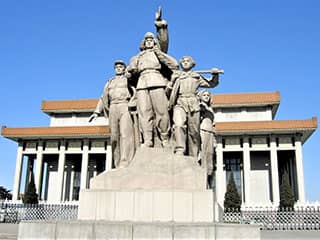Course Description
This course discusses China’s emergence as a global power, which has arisen out of two centuries of significant change. It explores those transformations from 1800 to the present by examining the advent of foreign imperialism in the nineteenth century, the collapse of the last imperial dynasty in 1911, …
This course discusses China’s emergence as a global power, which has arisen out of two centuries of significant change. It explores those transformations from 1800 to the present by examining the advent of foreign imperialism in the nineteenth century, the collapse of the last imperial dynasty in 1911, China’s debilitating war against Japan, the communist revolution, and the tumultuous history of the People’s Republic of China from 1949. Also, this course addresses the historical transformations that have shaped contemporary Chinese politics, ethnicity, gender, environment, economics, and international relations.
Course Info
Instructor
Departments
Learning Resource Types
assignment_turned_in
Written Assignments with Examples
assignment_turned_in
Activity Assignments with Examples
theaters
Videos

A sculpture stands in front of Chairman Mao Memorial Hall, the final resting place of Mao Zedong, the Chairman of the Chinese Communist Party from 1945 to 1976. (Image courtesy of Isriya Paireepairit on Flickr. License CC BY-NC).








